
Zofia Kossak-Szczucka was a Polish writer and World War II resistance fighter. She co-founded two wartime Polish organizations: Front for the Rebirth of Poland and Żegota, set up to assist Polish Jews to escape the Holocaust. In 1943, she was arrested by the Germans and sent to Auschwitz concentration camp, but survived the war.
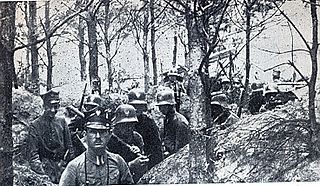
The Greater Poland uprising of 1918–1919, or Wielkopolska uprising of 1918–1919 or Posnanian War was a military insurrection of Poles in the Greater Poland region against German rule. The uprising had a significant effect on the Treaty of Versailles, which granted a reconstituted Second Polish Republic the area won by the Polish insurrectionists. The region had been part of the Kingdom of Poland and then Polish–Lithuanian Commonwealth before the 1793 Second Partition of Poland when it was annexed by the German Kingdom of Prussia. It had also, following the 1806 Greater Poland uprising, been part of the Duchy of Warsaw (1807–1815), a French client state during the Napoleonic Wars.

Oława is a historic town in south-western Poland with 33,029 inhabitants (2019). It is situated in Lower Silesian Voivodeship, within the Wrocław metropolitan area. It is the seat of Oława County and of the smaller administrative district of Gmina Oława.

Lubań, sometimes called Lubań Śląski ; is a town in the Lower Silesian Voivodeship in southwest Poland. It is the administrative seat of Lubań County and also of the smaller Gmina Lubań.
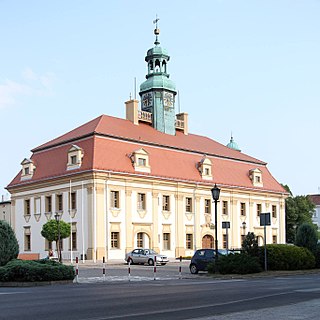
Rawicz is a town in west-central Poland with 21,398 inhabitants as of 2004. It is situated in the Greater Poland Voivodeship ; previously it was in Leszno Voivodeship (1975–1998). It is the capital of Rawicz County.

Dębno is a town in Myślibórz County, West Pomeranian Voivodeship in western Poland. As of December 2021, the town has a population of 13,443.

Dobiegniew is a town in western Poland, in Lubusz Voivodeship, in Strzelce-Drezdenko County. As of December 2021, the town has 3,004 inhabitants. It is situated on the Mierzęcka Struga River and southern shore of Wielgie Lake.
Kaliszanie or Kalisz Opposition was a semi-formal political group opposed to the conservative authorities of the Kingdom of Poland in the period preceding the outbreak of the November Uprising. The circle was formed around 1820 by brothers Bonawentura and Wincenty Niemojowski, two liberal politicians from the western provinces of Poland. The group was opposed to the government, yet supported only legal means of political struggle. Its main aims were the defence of the autonomy of Congress Poland within the Russian Empire and the Polish Constitution of 1815. They also played a pivotal role in founding of the National Patriotic Society.
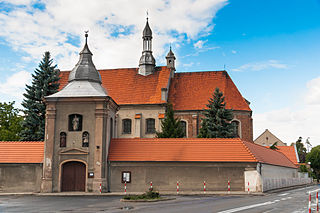
Koźmin Wielkopolski is a town in Krotoszyn County, Greater Poland Voivodeship, Poland, with 6,678 inhabitants according to the 2010 census. It is the seat of the Koźmin Wielkopolski urban-rural gmina, which has a population of 13,739 people as of 2010. Until January 1, 1997, the town's official name was "Koźmin"; "Wielkopolski" was then added to the name.

Adam Fastnacht doctor hab., historian, editor. He was a Polish historian, researcher of the history of the town and the district of Sanok Land. Fastnacht was born to a German family who settled in the east. He studied in Sanok, in Lwów at Lviv University under Franciszek Bujak and at the Jagiellonian University in Kraków, where in 1946 he received his PhD. Fastnacht was a member of the Armia Krajowa.
Goncarzewy is a village in the administrative district of Gmina Sicienko, within Bydgoszcz County, Kuyavian-Pomeranian Voivodeship, in north-central Poland. It lies 4 kilometres (2 mi) west of Sicienko and 20 km (12 mi) north-west of Bydgoszcz.

Berżniki is a village in the administrative district of Gmina Sejny, within Sejny County, Podlaskie Voivodeship, in north-eastern Poland, close to the border with Lithuania. It lies approximately 7 kilometres (4 mi) south-east of Sejny and 109 km (68 mi) north of the regional capital Białystok. Berżniki, like Sejny, has been inhabited by Lithuanians since its beginning.

Jarosław Saturnin Leitgeber was a Polish writer, bookseller and publisher. His brother, also a book bookseller and publisher, Mieczysław Antoni Leitgeber, inspired his career. Jarosław got his experience by working with his brother, interrupted only by military service in 1869.

Janusz Adam Kobierski is a Polish poet and priest of the Catholic Church

Tadeusz Czesław Malinowski was a Polish scientist and archaeologist specialising in the Bronze Age and early Iron Age.
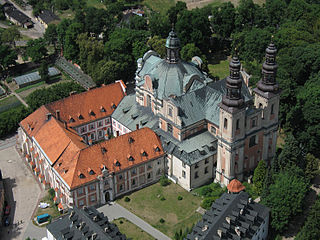
Ląd Abbey is a former Cistercian monastery in Ląd, Poland. It currently houses a seminary, the Higher Seminary of the Salesian Society, run by the Salesian order. On 1 July 2009, Ląd Abbey was designated an official Polish Historic Monument.

Józef Baran is a Polish poet.
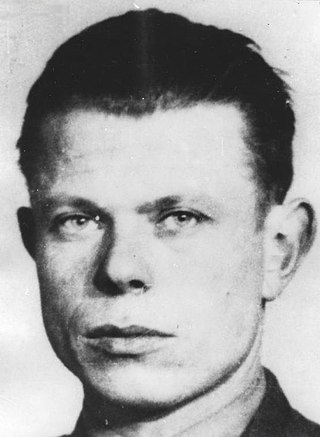
Stanisław Jerzy Sędziak, noms de guerre "Warta", "Wola", "Oset", "Wojna", "S-2", "T", "Stanisław Sędziszewski", "Zaremba", "Kulesza", "Czesław Noakowski" – a certified lieutenant colonel of the Polish Army, participant in the defensive war of Poland in 1939, cichociemny; 1942–1944 chief of staff of the Home Army Nowogródek District, in 1944 acting commander of the district, deputy and then chief of staff of the Białystok Citizens' Home Army District, Delegate of the Armed Forces for the Białystok District, in the years 1945–1947 deputy president of the WiN Central Area Management.

Located in the Babia Wieś District, the Babia Wieś Street is a half-kilometre-long alley extending along the Brda River, close to downtown Bydgoszcz in Kuyavian-Pomeranian, Poland. The street runs between Toruńska Street and the Brda River, running parallel to the East-West direction. It has a curved shape, and crosses Toruńska Street at both tips.
Mały Brzostek is a lost royal town located mainly on the area of today's Nawsie Brzosteckie village. It was adjacent to medieval Brzostek, which belonged to the Benedictine Abbey in Tyniec.





















